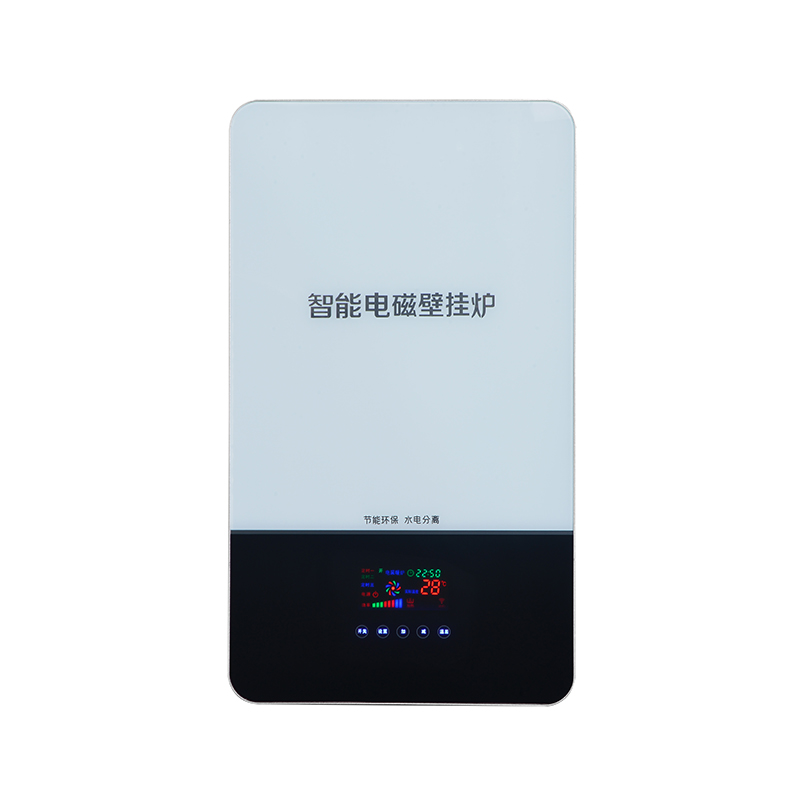How to match the resonant circuit parameters of an electromagnetic heating furnace to achieve stable operation?
Release Time : 2025-11-19
The resonant circuit is the core component of an electromagnetic heating furnace, and its parameter matching directly affects the heating efficiency, stability, and safety of the equipment. A resonant circuit typically consists of an inductor (heating coil), a capacitor (resonant capacitor), and a load (cookware). By adjusting the circuit parameters, the system reaches a resonant state at a specific frequency, thereby achieving efficient energy conversion. To achieve stable operation, comprehensive considerations are needed regarding resonant frequency matching, load adaptability, component parameter optimization, control strategy design, anti-interference capability, heat dissipation design, and safety protection mechanisms.
Resonant frequency matching is fundamental to the stable operation of an electromagnetic heating furnace. The resonant frequency of an electromagnetic heating furnace is determined by the parameters of the inductor and capacitor. When the circuit operates at the resonant frequency, the impedances of the inductor and capacitor cancel each other out, and the circuit exhibits pure resistive characteristics, resulting in minimal energy loss and maximum efficiency. If the frequency deviates from the resonant point, it will lead to increased circuit impedance, decreased current, reduced heating efficiency, and even overheating and damage to components. Therefore, the required capacitor value must be accurately calculated based on the inductance value of the heating coil to ensure stable resonance of the circuit at the target frequency.
Load adaptability is a key challenge in resonant circuit design. The material, size, and shape of different cookware alter the equivalent inductance and resistance of the load, thus affecting the resonant frequency. For example, iron cookware has better magnetic permeability than stainless steel, resulting in a higher equivalent inductance and a lower resonant frequency. To adapt to different loads, electromagnetic heating furnaces need dynamic adjustment capabilities. This involves detecting load changes and adjusting circuit parameters in real time, such as changing capacitance values or drive frequencies, to ensure the system always operates at its optimal resonant state.
Component parameter optimization is crucial for improving the stability of resonant circuits. The number of turns, wire diameter, and core material of the inductor coil directly affect its inductance and quality factor; appropriate parameters must be selected based on design requirements to reduce losses. Resonant capacitors must possess high withstand voltage, low equivalent series resistance (ESR), and high stability to withstand high-frequency, high-current surges and minimize energy loss. Furthermore, component layout and routing must be optimized to avoid parasitic parameters introducing additional losses or interference.
Control strategy design is critical to the stable operation of the resonant circuit. A closed-loop control algorithm monitors circuit parameters such as current, voltage, and frequency in real time and compares them with set values, dynamically adjusting the drive signal to maintain the resonant state. For example, using fuzzy control or PID control technology, power output can be automatically adjusted according to load changes to avoid overload or underload operation. Simultaneously, the synchronous control circuit must accurately detect the resonant state to ensure that the power switch operates under zero voltage or zero current conditions, reducing switching losses and electromagnetic interference.
Anti-interference capability is another key aspect of resonant circuit design. Electromagnetic heating furnaces generate high-frequency electromagnetic fields during operation, which may interfere with surrounding electronic equipment. They are also susceptible to fluctuations in mains voltage or external electromagnetic interference. To improve anti-interference capability, filtering components such as common-mode inductors and X/Y capacitors need to be added to the circuit to suppress conducted interference; at the same time, PCB layout should be optimized to shorten high-frequency loop paths and reduce radiated interference.
Heat dissipation design significantly affects the long-term stability of the resonant circuit. Inductors and power switches generate a large amount of heat during operation. Poor heat dissipation can lead to increased component temperatures, resulting in performance degradation or damage. Therefore, key components must be equipped with heat sinks or fans, and the heat dissipation channel design must be optimized to ensure timely heat dissipation. Simultaneously, a temperature monitoring circuit can provide real-time feedback on component temperatures, automatically reducing power or shutting down for protection when safety thresholds are exceeded.
The safety protection mechanism is the last line of defense in the resonant circuit design. The electromagnetic heating furnace must have overvoltage, overcurrent, overtemperature, and short-circuit protection functions, quickly cutting off power when circuit abnormalities occur to prevent equipment damage or safety accidents. For example, a comparator circuit can detect voltage or current values, triggering protection actions when they exceed set values; simultaneously, a fault self-diagnosis system can record abnormal information, facilitating rapid problem location by maintenance personnel.





